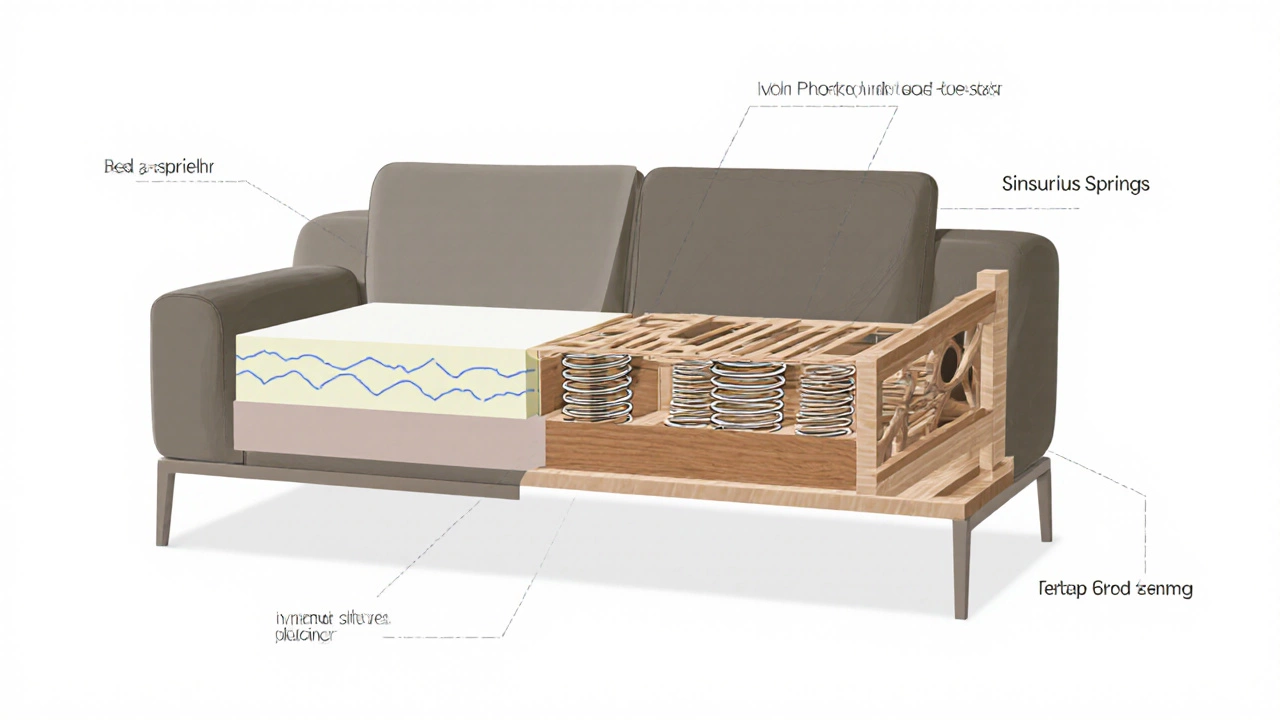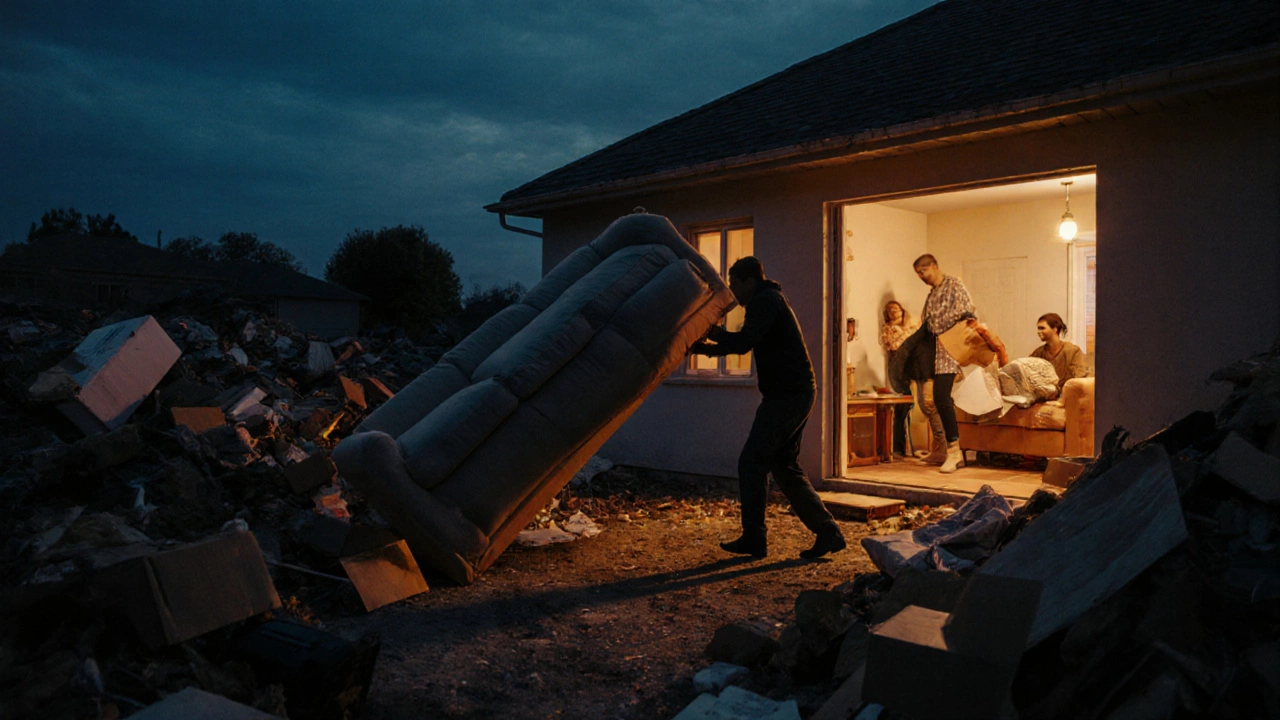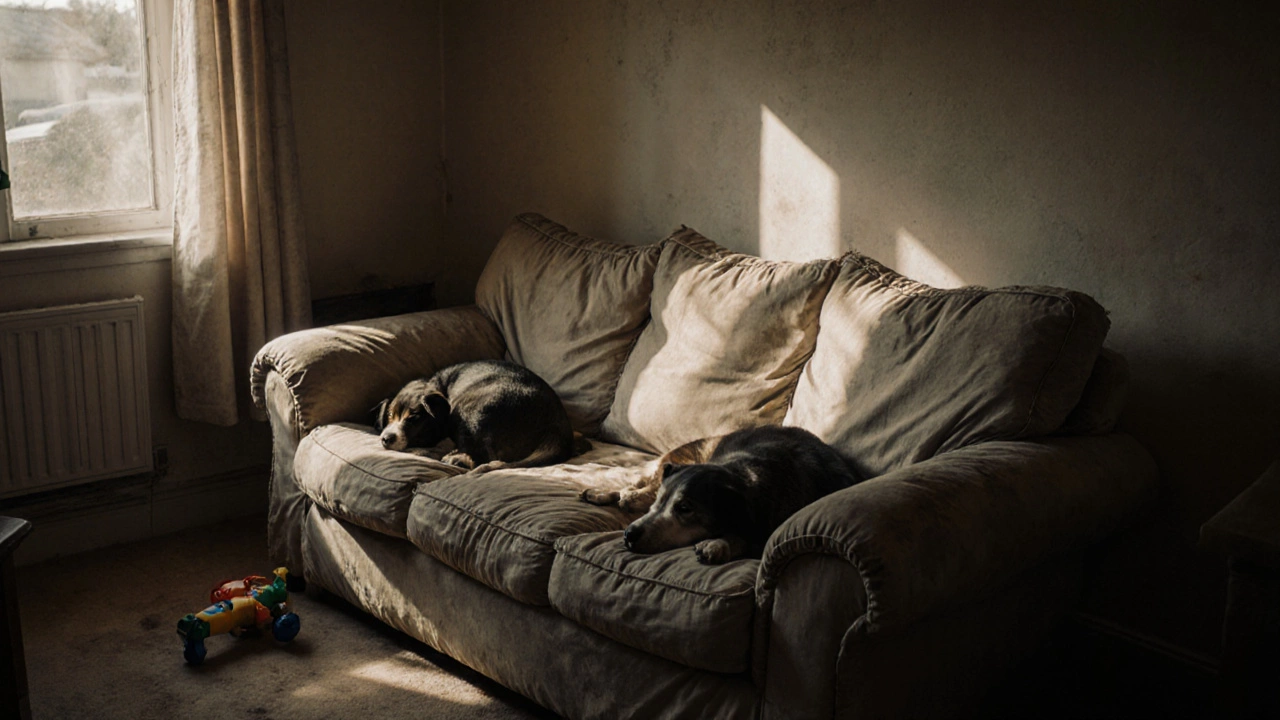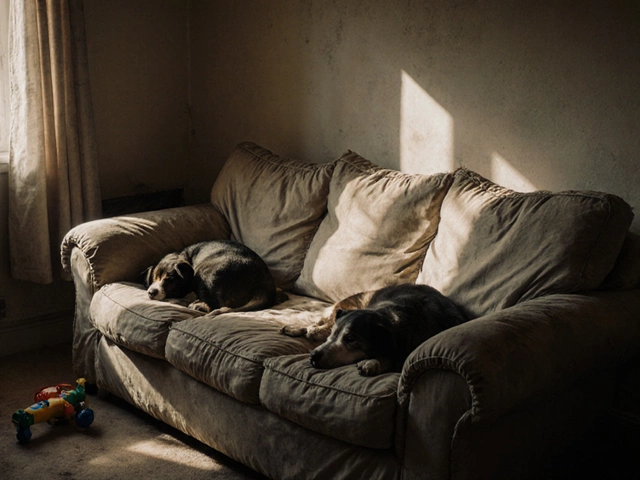Sofa Longevity Estimator
How Long Will Your Sofa Last?
Enter details about your sofa and usage patterns to estimate its lifespan. This tool uses industry standards based on materials, construction quality, and how you care for it.
How long should a cheap sofa last? If you bought one for under $500, you probably expected it to last a few years-not a decade. But how many years is actually reasonable? And what happens when it starts to sag, squeak, or lose its shape? The truth is, most budget sofas don’t last as long as people hope. But they also don’t all fall apart after six months. It depends on how they’re made, how often they’re used, and what you do to take care of them.
What Makes a Sofa "Cheap"?
A cheap sofa isn’t just about price. It’s about materials and construction. Most budget sofas under $600 use engineered wood frames instead of solid hardwood. The springs are often zig-zag steel or elastic webbing instead of hand-tied eight-way springs. Cushions are filled with low-density foam-sometimes as thin as 1.8 pounds per cubic foot-instead of higher-density foam or down blends. The fabric? Usually polyester blends that pill, fade, or stretch out fast.
These choices cut costs, but they also cut longevity. A sofa with a solid hardwood frame and high-density foam can last 10 to 15 years. A budget sofa? Most last between 2 and 5 years under normal use. That’s not a failure-it’s the design. Manufacturers know people buying cheap sofas aren’t looking for heirlooms. They’re looking for something that works for now.
How Daily Use Changes Everything
Two people can buy the same $399 sofa. One uses it for movie nights and weekend naps. The other has three kids, a dog, and hosts game nights every Friday. The first one might get 4 or 5 years out of it. The second? Maybe 18 months.
Weight matters. A sofa rated for 250 pounds per seat will show wear faster if adults weighing 200+ pounds sit on it daily. Pets with claws scratch upholstery. Kids jump on the arms. Spills aren’t cleaned right away. All of this adds up. Even the best cheap sofa can’t handle constant abuse without showing damage.
Look at the cushions. If they’re flat and don’t bounce back after you stand up, the foam has broken down. If the frame creaks when you lean back, the joints are loosening. These aren’t signs of poor quality-they’re signs of normal wear. Cheap sofas are built to last through the first few years of life, not decades.
Signs It’s Time to Replace Your Sofa
You don’t need to replace your sofa just because it looks worn. But if you’re noticing these signs, it’s time to start shopping:
- Cushions won’t fluff back up-even after fluffing and rotating them daily
- The frame is wobbly-you can feel movement when you sit down or shift your weight
- Stains won’t come out-and the fabric is starting to fray around them
- It smells-mildew, pet odor, or just old upholstery smell that won’t air out
- The legs are broken or missing-and replacement parts aren’t available
If you’re sitting on it and your back aches, or you have to shift positions constantly to get comfortable, the support system has failed. That’s not just about comfort-it’s about posture. A broken-down sofa can cause real physical strain over time.

How to Make a Cheap Sofa Last Longer
You can’t turn a $299 sofa into a $2,000 one. But you can stretch its life by 1-2 years with simple habits:
- Rotate cushions weekly-This evens out wear. Flip them over and switch positions.
- Use a sofa cover-A removable, washable slipcover protects the fabric from spills, pet hair, and sun fading. Look for ones with non-slip backing.
- Keep it away from direct sunlight-UV rays break down fabric and foam faster. Move it a few feet if it’s near a window.
- Clean spills immediately-Blot, don’t rub. Use a mild soap and water mix. Let it air dry.
- Don’t sit on the arms-They’re not designed to hold weight. That’s where frames crack first.
- Vacuum regularly-Dust and dirt grind into fabric like sandpaper. Use the brush attachment every two weeks.
These steps won’t stop the foam from compressing forever. But they’ll slow it down. And if you’re planning to replace the sofa in 3-4 years anyway, this buys you time.
When Buying a New Sofa: What to Look For
If you’re replacing a cheap sofa, you don’t need to buy the most expensive one. But you can do better than the $399 model you just gave up on.
Here’s what to check before you buy:
- Frame material-Hardwood (like oak or birch) beats engineered wood. Look for "kiln-dried hardwood" in the product description.
- Cushion density-Look for foam with a density of at least 2.0 lbs/ft³. Higher is better. If it’s not listed, call the store.
- Spring system-Sinuous springs (S-shaped steel) are better than elastic webbing. They last longer and hold shape.
- Warranty-A 1-year warranty is normal. Anything longer (2-5 years) means the manufacturer has confidence in the build.
- Removable covers-Even if you don’t plan to wash them, having the option helps with cleaning and future replacement.
Some brands like IKEA, Target’s Threshold line, and Wayfair’s budget collections offer sofas in the $500-$800 range that last 5-7 years with decent care. That’s not luxury, but it’s a big step up from the $300 models.

What Happens to Old Sofas?
Most cheap sofas end up in landfills. The foam doesn’t biodegrade. The fabric is often synthetic. The frame is glued, not screwed, so it’s hard to recycle.
But you can do better. Before you toss it:
- Check if your city offers bulk pickup for furniture
- Donate it to a shelter if it’s still usable
- Sell it on Facebook Marketplace or Craigslist for $50-$100
- Take it to a furniture recycler-some companies take apart sofas and reuse the metal and wood
One person’s trash is another’s bargain. Your old sofa might be someone else’s perfect starter piece.
Final Answer: How Long Should a Cheap Sofa Last?
Realistically, a cheap sofa lasts between 2 and 5 years. If you use it lightly, keep it clean, and avoid heavy daily wear, you might stretch it to 5. If you have kids, pets, or use it every night? Expect 2-3 years.
That’s not a bad deal if you’re on a tight budget. But don’t expect it to outlive your lease, your marriage, or your dog’s lifetime. Budget sofas are designed for temporary comfort-not permanent seating.
When it starts to sag, smell, or squeak, don’t feel guilty about replacing it. It’s not a failure. It’s just how these things work. The key is to plan for it. Buy with your timeline in mind. If you’re moving in a year, go cheap. If you’re staying put for five? Spend a little more. You’ll thank yourself later.
Can I fix a sagging cheap sofa instead of replacing it?
You can try. Replacing the foam cushions with higher-density foam (2.5 lbs/ft³ or more) can help. You can also add a plywood board under the seat to support the frame. But if the frame is broken or the springs are worn, repairs won’t last. It’s usually cheaper and easier to replace the whole sofa.
Is it worth buying a used sofa instead of a new cheap one?
Sometimes. A used sofa that’s 2-3 years old and still in good shape can give you 3-5 more years of use. Look for solid frames, clean fabric, and no broken springs. Avoid anything with stains, odors, or wobbly legs. A $150 used sofa with good bones is often a better deal than a $300 brand-new one with low-density foam.
Do more expensive sofas always last longer?
Not always. Some high-priced sofas are just branded versions of the same cheap construction. Always check the materials-not the price tag. A $1,200 sofa with engineered wood and 1.8 lb foam isn’t better than a $700 one with hardwood and 2.5 lb foam. Read reviews, check the specs, and don’t assume cost equals quality.
What’s the cheapest sofa that’s actually worth buying?
Look for sofas between $500 and $700 from brands like IKEA, Target’s Threshold, or Wayfair’s basic lines. They often use hardwood frames, sinuous springs, and foam density above 2.0 lbs/ft³. Avoid anything under $400 unless you know the specs. A $450 sofa with no material details is likely a waste of money.
Should I buy a sofa with a fabric protector?
Yes-if it’s already treated. Many budget sofas come with a stain-resistant finish. If yours doesn’t, you can apply a fabric protector like Scotchgard. It won’t make the sofa last longer, but it will make cleaning spills easier and help the fabric look newer longer.

